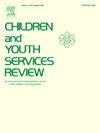匈牙利寄宿照料中兄弟姐妹的依恋和社会化:一项民族志研究
IF 1.7
2区 社会学
Q1 FAMILY STUDIES
引用次数: 0
摘要
有几个因素和行为者影响住在寄宿照料机构的儿童和青少年的早期社会化和依恋。本研究通过三个兄弟姐妹群体的年轻成员及其照顾者的感知,探讨了匈牙利寄宿护理机构中社会化和依恋模式的动态。这项研究建立在对儿童及其照顾者进行全面而严谨的人种学研究的基础上,采用混合方法,包括观察、访谈和非正式谈话,并辅以儿童个人档案的数据。通过识别关键角色——父母、兄弟姐妹、机构内外的亲密朋友、照顾者和学校工作人员——研究提供了对一个仍然有些不可见的生态系统的见解。结果表明,照顾者承担着父母的各种角色和功能,充当着儿童、家庭和学校之间的桥梁。兄弟姐妹关系表现出强烈和微弱的依恋模式,与家庭背景密切相关。机构内的亲密朋友主要是玩伴或帮派伙伴,而机构外的朋友则提供了与“外部世界”的关键联系,潜在地塑造了健康、运转良好的家庭关系。学校也作为与外部世界的联系,但同时也提出了与成功和失败相关的挑战。研究结果强调了认识和加强照顾者和兄弟姐妹关系作为保护因素的重要性,培养与外部世界的高质量联系,并确保对照顾者和学校工作人员进行有针对性的培训,以有效地支持这些关系。本文章由计算机程序翻译,如有差异,请以英文原文为准。
Attachment and socialization of siblings in Hungarian residential care: An ethnographic study
Several factors and actors influence the early socialization and attachment of children and adolescents living in residential care institutions. This study explores the dynamics of socialization and attachment patterns in a Hungarian residential care institution through the perceptions of young members of three sibling groups and their caregivers.
The study builds on comprehensive and rigorous ethnographic research conducted with children (7) and their caregivers (5) employing a mixed-method approach, including observations, interviews, and informal conversations, supplemented with data from children’s personal files. By discerning key actors—parents, siblings, close friends within and outside the institution, caregivers, and school staff—the study provides insights into a still somewhat invisible ecosystem.
The results show that caregivers take on various parental roles and functions, acting as a bridge between children, their families, and schools. Sibling relationships demonstrated both strong and weak attachment patterns, strongly correlating with family backgrounds. Close friends within the institution primarily serve as playmates or gang peers, while those outside the institution offer a crucial link to the ‘outside world,’ potentially modeling healthy and well-functioning family relationships. School also serves as a connection to the external world but simultaneously presents challenges related to success and failure.
The findings highlight the importance of recognizing and strengthening caregiver and sibling bonds as protective factors, fostering high-quality connections with the outside world, and ensuring targeted training for caregivers and school staff to effectively support these relationships.
求助全文
通过发布文献求助,成功后即可免费获取论文全文。
去求助
来源期刊

Children and Youth Services Review
Multiple-
CiteScore
6.30
自引率
6.10%
发文量
303
期刊介绍:
Children and Youth Services Review is an interdisciplinary forum for critical scholarship regarding service programs for children and youth. The journal will publish full-length articles, current research and policy notes, and book reviews.
 求助内容:
求助内容: 应助结果提醒方式:
应助结果提醒方式:


